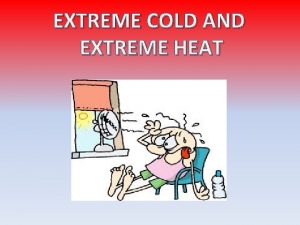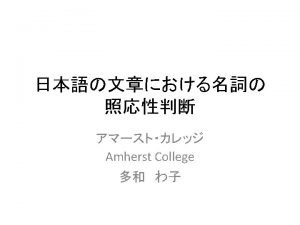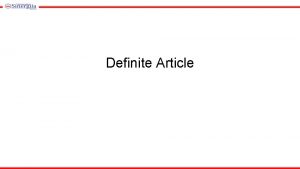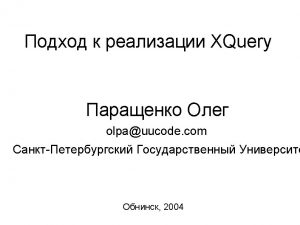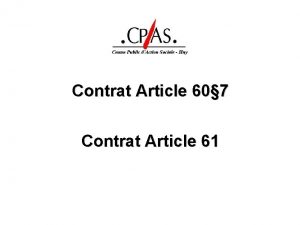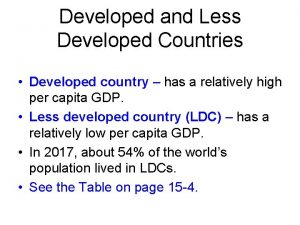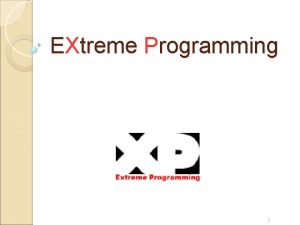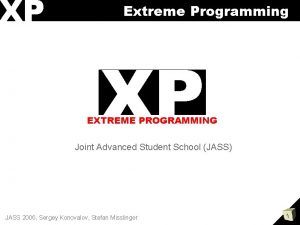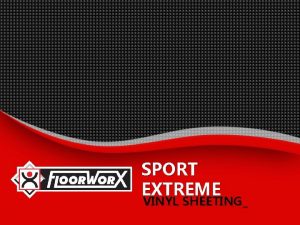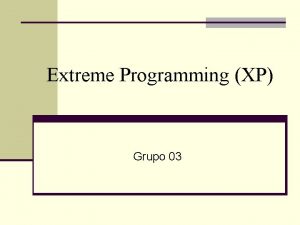PP Developed from the article Strategies for Extreme






















- Slides: 22

PP Developed from the article: Strategies for Extreme Efficiency by Katrin Klingenberg & Mike Kernagis (Home Power #138)

Building sector energy use in US � 20% of the nations energy use is Residential �Space heating and cooling represents more than 50% of households energy use � Buildings in the US account for 48% of greenhouse gas emissions annually � 76% of all electricity generated in the US supplies the building sector

Passive House (PH) �The Passivehaus (Passive House or PH) Institute was developed in the 1990 s in Darmstadt Germany by Bo Adamson and German physicist Dr. Wolfgang Feist �PHI was inspired by the United Nations Framework Convention on Climate Change and superinsulated houses built in Canada and the U. S. during the late 1970 s.

Passive House Institute US (PHIUS) �In April 2007, PHIUS was founded to promote the development of PH knowledge and construction in the US. �PHIUS is an independent institute that determines if a building meets the PH standard. �There is currently 28 certified PH in the US and many more in the precertification stage.

The Passive House (PH) concept �slashing heating and cooling of buildings by 90% over a conventionally constructed building �represents the highest energy standard for buildings

How does PH accomplish this? �Minimizing energy losses �Maximizing passive energy gains

According to the Architecture 2030 campaign �An average, conventionally built, single-family home in the Midwest uses 14. 5 k. Wh (49. 5 k. Btu) per square foot per year site energy for space conditioning, domestic hot water, and household electricity.

�A new home built to code uses 12 k. Wh or 41 k. BTu/ft 2 �Energy Star Home uses about 20% less 9. 6 k. Wh or 32. 8 k. Btu/ft 2 �Passive House 1. 39 k. Wh or 4. 75 k. Btu/ft 2 50 45 40 35 30 Conventional Midwest Home 25 New code built home Energy Star Home 20 Passive House 15 10 5 0 k. Btu/ft 2

PH seven principles 1) 2) 3) 4) 5) 6) 7) Superinsulate Eliminate thermal bridges make it airtight Specify ERVs or HRVs Specify high-performance windows and doors Optimize passive solar and internal heat gains Evaluate and optimize energy gains and losses

Superinsulate Using maximum amounts of insulation and careful attention to its installation are key elements in achieving a high-performance envelope.

Eliminate Thermal Bridges Thermal Bridge: a material that has high thermal conductivity or poor insulative value PH specifies a thermal bridge coefficient of. 01 W/m-k which translates to a R-14

Visual illustration of a thermal bridge �Isotherms are contour lines or surface on a map that connects or indicates points of equal temperature. �This is a map depicting isotherms across a wall section

Air Tight Continuous air barrier is applied to achieve Air leakage of. 6 air ACH 50

Energy or Heat Recovery Ventilation (ERV or HRV) �PH use heat recovering ventilation systems to achieve good indoor air quality �ERVs transfer both heat and moisture, regulating humidity for comfort and capturing the latent heat adding efficiency

Energy or Heat Recovery Ventilation (ERV or HRV)

Earth Tubes

High Performance Windows PH windows incorporate – • low-emissivity coatings reflect radiant heat in or out depending on the climate • Low conductivity argon and krypton gases are used between multiple panes reducing heat loss or gains • Frames are insulated creating a thermal break reducing conductivity

High Performance Doors • Layers of Insulation creating a thermal break • Utilizing VIPs to achieve R-60 in 2” • triple sealing door bottoms to achieve air tightness levels

Optimized Passive Solar and Internal Heat Gains �PH must minimize losses and carefully manage a building’s energy gains.

Evaluate Energy Gains & Losses �The Passive House Planning Package (PHPP) is used to model the building to determine if it meets the incredibly low PH energy demands

PH Requirements �Space heating and cooling must be <= 4. 75 k. Btu/ft 2/year �Primary (total) energy use must be <= 38 k. Btu/ft 2/year �Airtightness must be <=. 6 ACH 50

Up-Front Costs �Estimations suggest building to PH standard in the US adds 10 -20% to building costs. �Majority of additional cost are in doors and windows �In Europe building to PH standard only adds about 35% to building costs
 Extreme wide shots
Extreme wide shots Fredsgudinna
Fredsgudinna Vilken grundregel finns det för tronföljden i sverige?
Vilken grundregel finns det för tronföljden i sverige? Big brother rösta
Big brother rösta Verktyg för automatisering av utbetalningar
Verktyg för automatisering av utbetalningar Förklara densitet för barn
Förklara densitet för barn Ministerstyre för och nackdelar
Ministerstyre för och nackdelar Sju principer för tillitsbaserad styrning
Sju principer för tillitsbaserad styrning Bat mitza
Bat mitza Nationell inriktning för artificiell intelligens
Nationell inriktning för artificiell intelligens Nyckelkompetenser för livslångt lärande
Nyckelkompetenser för livslångt lärande Sju för caesar
Sju för caesar Informationskartläggning
Informationskartläggning Modell för handledningsprocess
Modell för handledningsprocess Autokratiskt ledarskap
Autokratiskt ledarskap Stål för stötfångarsystem
Stål för stötfångarsystem Centrum för kunskap och säkerhet
Centrum för kunskap och säkerhet Underlag för särskild löneskatt på pensionskostnader
Underlag för särskild löneskatt på pensionskostnader Shaktismen
Shaktismen Urban torhamn
Urban torhamn Inköpsprocessen steg för steg
Inköpsprocessen steg för steg Kolposkopi, px
Kolposkopi, px Strategi för svensk viltförvaltning
Strategi för svensk viltförvaltning

























